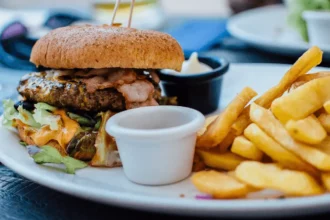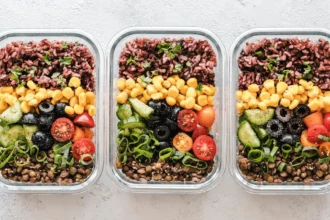
Did you know the average American consumes over 36 grams of added sugar daily – nearly three times the recommended amount?
If you’re wondering what happens when you quit sugar, you’re about to discover one of the most transformative health decisions you can make.
This comprehensive guide reveals the complete sugar detox timeline, from initial withdrawal symptoms to life-changing long-term benefits.
Why Sugar Is So Addictive: The Science Behind Sugar Dependence
Before exploring what happens to your body when you quit sugar, it’s crucial to understand why breaking free from sugar feels so challenging.
When you consume sugar, your brain releases dopamine in the reward center, creating pleasurable feelings similar to addictive substances. This neurological response explains why sugar withdrawal symptoms can feel intense and why many people struggle with sugar cravings.
The blood sugar roller coaster compounds this addiction. After consuming sugar, your blood glucose spikes rapidly, triggering insulin release. This process often leads to blood sugar crashes, creating more cravings and perpetuating the cycle. Research shows that this pattern can alter brain chemistry over time, making sugar increasingly difficult to resist.
Understanding the difference between natural and added sugars is essential for your sugar detox journey. Natural sugars in whole fruits come with fiber, vitamins, and minerals that slow absorption. Added sugars in processed foods create rapid blood sugar spikes without nutritional benefits, making them particularly problematic for health.
Complete Sugar Detox Timeline: Day-by-Day Changes
Days 1-3: The Initial Withdrawal Phase
The first 72 hours represent the most challenging period when you quit sugar. During this initial phase, your body begins adjusting to functioning without regular sugar intake, leading to various sugar withdrawal symptoms.
Common symptoms during days 1-3 include:
- Intense sugar cravings
- Headaches and fatigue
- Mood swings and irritability
- Brain fog and difficulty concentrating
- Sleep disturbances
- Mild flu-like symptoms
These symptoms occur because your brain is adjusting to lower dopamine levels and your body is learning to maintain stable blood sugar without external sugar sources. The intensity varies among individuals, but understanding this phase helps you push through the discomfort.
Managing initial withdrawal:
- Stay hydrated with plenty of water
- Eat protein-rich meals to stabilize blood sugar
- Get adequate sleep (7-9 hours)
- Practice stress-reduction techniques like meditation
- Remove all sugar sources from your environment
Days 4-7: Stabilization Begins
By day four, most people notice sugar detox symptoms beginning to subside. Your body starts adapting to more stable blood sugar levels, and the intense cravings typically decrease in frequency and intensity.
Positive changes during week one:
- Reduced sugar cravings intensity
- Improved sleep quality
- More stable energy levels throughout the day
- Better mood regulation
- Reduced bloating and digestive issues
Studies indicate that blood sugar stabilization typically occurs within the first week of eliminating added sugars, explaining why many people feel dramatically better after just seven days.
Week 2-4: Noticeable Physical Changes
The second through fourth weeks bring remarkable transformations as your body fully adapts to life without added sugars. This period showcases the true benefits of quitting sugar.
Physical improvements weeks 2-4:
- Weight loss begins (typically 2-5 pounds from reduced water retention and calories)
- Skin clarity improves noticeably
- Digestive health enhances significantly
- Sustained energy without afternoon crashes
- Reduced inflammation markers
- Better sleep patterns establish
Many people report that their taste buds begin changing during this period. Foods that previously seemed bland now taste more flavorful, while overly sweet foods become unpalatable.
Month 2-3: Long-term Benefits Emerge
Two to three months into your sugar detox timeline, the most significant health transformations become apparent. Your body has fully adapted to stable blood sugar levels, and the long-term quit sugar benefits emerge.
Major improvements at 2-3 months:
- Sustained weight management without calorie restriction
- Dramatically improved mental clarity and focus
- Stable mood throughout the day
- Reduced chronic inflammation
- Better cardiovascular health markers
- Enhanced immune system function
Research demonstrates that reducing added sugar intake for 10 weeks significantly improves metabolic health markers, including blood pressure, cholesterol levels, and insulin sensitivity.
6+ Months: Complete Transformation
After six months of maintaining a sugar-free lifestyle, most people experience complete transformation in their relationship with food and overall health.
Long-term changes at 6+ months:
- Complete taste preference transformation
- Effortless weight maintenance
- Optimal energy levels throughout the day
- Significantly reduced risk of chronic diseases
- Improved mental health and emotional stability
- Enhanced physical performance and endurance
10 Incredible Physical Benefits of Going Sugar-Free
1. Sustainable Weight Loss and Body Composition Changes
One of the most noticeable benefits of quitting sugar is healthy weight management. Studies show that reducing added sugar intake leads to significant weight loss without calorie restriction. This occurs because eliminating sugar reduces insulin spikes that promote fat storage, particularly dangerous visceral fat around organs.
2. Remarkable Skin Health Improvements
Sugar consumption contributes to skin aging through a process called glycation, where sugar molecules bind to collagen proteins, causing wrinkles and age spots. When you quit sugar, many people notice clearer, more youthful-looking skin within weeks.
3. Enhanced Digestive Health
Added sugars feed harmful bacteria in your gut, disrupting the microbiome balance. Eliminating sugar allows beneficial bacteria to flourish, improving digestion, reducing bloating, and enhancing nutrient absorption.
4. Reduced Chronic Inflammation
Sugar triggers inflammatory responses throughout the body. Research indicates that reducing sugar intake significantly decreases inflammatory markers, potentially reducing the risk of chronic diseases like arthritis, heart disease, and diabetes.
5. Improved Cardiovascular Health
Quitting sugar dramatically improves heart health by reducing blood pressure, decreasing bad cholesterol levels, and improving overall cardiovascular function. The American Heart Association links excessive sugar consumption to increased heart disease risk.
6. Better Dental Health
Sugar feeds harmful oral bacteria that produce acid, leading to tooth decay and gum disease. Eliminating added sugars significantly improves oral health and reduces dental problems.
7. Enhanced Immune System Function
High sugar intake suppresses immune system function for hours after consumption. Studies demonstrate that reducing sugar strengthens immune response and increases resistance to infections.
8. Improved Sleep Quality
Sugar consumption, especially later in the day, disrupts sleep patterns by causing blood sugar fluctuations. People who quit sugar typically experience deeper, more restorative sleep within weeks.
9. Increased Energy and Stamina
Without blood sugar spikes and crashes, your energy levels become stable and sustained throughout the day. Many people report having more energy for exercise and daily activities.
10. Reduced Chronic Disease Risk
Long-term sugar reduction significantly decreases the risk of type 2 diabetes, metabolic syndrome, certain cancers, and neurodegenerative diseases like Alzheimer’s.
How Quitting Sugar Transforms Your Mental Health
The mental health benefits of quitting sugar are often as dramatic as the physical improvements. Sugar consumption directly impacts brain chemistry, mood regulation, and cognitive function.
Improved Mood Stability
Sugar creates dramatic mood swings through blood glucose fluctuations. When you maintain stable blood sugar levels, your mood becomes more consistent and positive throughout the day. Research shows that reducing sugar intake can significantly improve symptoms of depression and anxiety.
Enhanced Cognitive Function and Memory
Brain fog is a common symptom of blood sugar instability. People who quit sugar often report dramatic improvements in mental clarity, focus, and memory retention within weeks.
Reduced Anxiety and Depression Symptoms
High sugar intake is linked to increased anxiety and depression risk. The inflammatory effects of sugar can negatively impact brain function and mood regulation. Many people experience significant improvements in mental health after eliminating added sugars.
Better Stress Management
Stable blood sugar levels improve your body’s ability to handle stress. Without sugar-induced cortisol spikes, you’ll likely find yourself more resilient and better able to cope with daily challenges.
Increased Mental Clarity and Focus
Without the distraction of sugar cravings and energy crashes, most people experience improved concentration and productivity. This mental clarity often leads to better decision-making and increased motivation.
Navigating Sugar Withdrawal: Common Challenges and Solutions
Managing Intense Cravings
Sugar detox symptoms include powerful cravings that can derail your progress. Here are proven strategies for managing them:
- Protein strategy: Eat protein every 3-4 hours to maintain stable blood sugar
- Healthy fats: Include avocados, nuts, and olive oil to increase satiety
- Distraction techniques: Take a walk, call a friend, or engage in a hobby when cravings hit
- Hydration: Often thirst masquerades as sugar cravings
- Sleep priority: Poor sleep intensifies cravings significantly
Dealing with Social Situations
Social events often revolve around sugary foods, making it challenging to maintain your sugar detox:
- Eat before attending events to avoid temptation
- Bring your own healthy alternatives
- Focus on socializing rather than food
- Practice polite ways to decline offers
- Find supportive friends who understand your goals
Reading Food Labels Effectively
Hidden sugars appear under many names on ingredient lists. Learn to identify terms like high fructose corn syrup, agave nectar, cane juice, dextrose, and maltose. The FDA requires added sugars to be listed separately on nutrition labels.
Finding Healthy Alternatives
Replace sugar cravings with naturally sweet whole foods:
- Fresh berries and seasonal fruits
- Dates stuffed with almond butter
- Cinnamon-spiced herbal teas
- Roasted sweet potatoes
- Dark chocolate (85% cacao or higher)
Handling Setbacks and Slip-ups
Everyone experiences setbacks when quitting sugar. The key is getting back on track quickly without guilt:
- Don’t let one slip-up become a week-long binge
- Analyze what triggered the setback
- Adjust your strategy accordingly
- Focus on progress, not perfection
- Seek support from friends, family, or online communities
Your Step-by-Step Guide to Quit Sugar for Good
Phase 1: Preparation (Week Before)
Success in how to quit sugar begins with thorough preparation:
Pantry cleanout checklist:
- Remove all obvious sugary foods (candy, cookies, pastries)
- Eliminate sugary drinks (soda, juice, sports drinks)
- Check condiments and sauces for hidden sugars
- Replace with whole food alternatives
- Stock up on protein sources and healthy fats
Meal planning strategies:
- Plan all meals and snacks for the first week
- Prepare protein-rich breakfast options
- Identify satisfying lunch and dinner combinations
- Create a list of approved snacks
- Consider meal prep to reduce decision fatigue
Building support systems:
- Tell family and friends about your goals
- Find an accountability partner
- Join online support communities
- Consider working with a nutritionist
- Prepare responses for social situations
Phase 2: Elimination (Weeks 1-2)
The elimination phase requires strict adherence to see the best results:
Which sugars to eliminate first:
- Start with obvious sources: candy, pastries, sugary drinks
- Progress to hidden sugars in processed foods
- Eventually reduce natural sugars if desired
- Focus on whole, unprocessed foods
- Read every ingredient label carefully
Emergency craving strategies:
- Keep protein snacks readily available
- Practice deep breathing exercises
- Take a 10-minute walk
- Drink a large glass of water
- Call your accountability partner
Hydration and nutrition tips:
- Drink half your body weight in ounces of water daily
- Eat protein with every meal and snack
- Include healthy fats to increase satiety
- Consume plenty of fiber-rich vegetables
- Take a high-quality multivitamin
Phase 3: Maintenance (Month 1+)
Long-term success requires developing sustainable habits:
Creating sustainable habits:
- Establish consistent meal timing
- Develop new reward systems unrelated to food
- Practice mindful eating techniques
- Regular exercise to manage stress and cravings
- Continuous education about nutrition
Reintroducing natural sugars mindfully:
- Start with small amounts of whole fruits
- Monitor your body’s response
- Avoid triggering foods that cause cravings
- Maintain the majority of your diet sugar-free
- Focus on nutrient-dense whole foods
Long-term success strategies:
- Regular health check-ups to track progress
- Ongoing support from community or professionals
- Flexibility for special occasions
- Continuous learning about healthy nutrition
- Celebrating non-scale victories
Best Sugar Alternatives for Your Health Journey
When transitioning away from sugar, having healthy alternatives helps manage cravings and maintain enjoyment in eating.
Natural Sweeteners
Stevia: A zero-calorie plant-based sweetener that doesn’t affect blood sugar levels. Choose pure stevia extract without added fillers.
Monk fruit: Another zero-calorie natural sweetener with antioxidant properties. It’s significantly sweeter than sugar, so use sparingly.
Dates: Whole dates provide natural sweetness along with fiber, potassium, and antioxidants. They work well in baking and smoothies.
Whole Food Alternatives
Focus on naturally sweet whole foods that provide nutrients alongside sweetness:
- Fresh and frozen berries
- Applesauce (unsweetened)
- Mashed bananas in baking
- Sweet potatoes and winter squashes
- Cinnamon and vanilla extract for flavor
What to Avoid in “Sugar-Free” Products
Many “sugar-free” products contain artificial sweeteners that may trigger cravings or cause digestive issues:
- Aspartame
- Sucralose
- Acesulfame potassium
- Sugar alcohols (sorbitol, mannitol, xylitol)
Portion Control Guidelines
Even with natural alternatives, moderation is key:
- Limit natural sweeteners to special occasions
- Use the smallest amount needed for satisfaction
- Focus on retraining your palate to appreciate less sweetness
- Gradually reduce sweetener quantities over time
Important Health Considerations
Medical Conditions Requiring Supervision
Certain medical conditions require professional supervision when making significant dietary changes:
- Diabetes: Blood sugar medications may need adjustment
- Eating disorders: Professional support is essential
- Hypoglycemia: Careful monitoring of blood sugar levels needed
- Pregnancy or breastfeeding: Consult healthcare providers first
- Taking medications: Some drugs interact with dietary changes
Signs That Require Professional Guidance
Seek medical advice if you experience:
- Severe or prolonged withdrawal symptoms
- Extreme fatigue lasting more than two weeks
- Persistent mood changes or depression
- Significant weight loss or gain
- Any concerning physical symptoms
Working with Nutritionists and Doctors
Professional support can significantly improve your success rate:
- Registered dietitians can create personalized meal plans
- Doctors can monitor health markers and medication needs
- Mental health professionals can address emotional eating
- Support groups provide community and accountability
Frequently Asked Questions
How long does it take to detox from sugar?
Most people experience the worst sugar withdrawal symptoms for 3-5 days, with significant improvement by day 7. Complete sugar detox typically takes 2-4 weeks, though individual experiences vary based on previous sugar consumption levels and overall health.
What are the first signs that sugar detox is working?
The first positive signs include reduced sugar cravings (usually by day 4-7), improved sleep quality, more stable energy levels, and decreased bloating. Many people also notice improved mood and mental clarity within the first week.
Can you quit sugar cold turkey?
Yes, quitting sugar cold turkey is safe for most healthy individuals and often more effective than gradual reduction. However, people with diabetes, eating disorders, or other medical conditions should consult healthcare providers before making drastic dietary changes.
Will I lose weight when I quit sugar?
Most people lose 2-5 pounds in the first week from reduced water retention and calorie reduction. Continued weight loss depends on overall diet and lifestyle factors, but eliminating sugar typically supports healthy weight management long-term.
What should I eat when I quit sugar?
Focus on whole foods including lean proteins, healthy fats, non-starchy vegetables, and limited whole fruits. Good options include eggs, fish, chicken, avocados, nuts, leafy greens, berries, and complex carbohydrates like quinoa and sweet potatoes.
How do I handle sugar cravings?
Combat cravings with protein-rich snacks, adequate hydration, regular meals, stress management, and distraction techniques. Cravings typically last 10-20 minutes, so having a plan helps you push through them successfully.
Is fruit allowed when quitting sugar?
Whole fruits contain natural sugars along with fiber, vitamins, and minerals. Most sugar detox plans allow moderate amounts of low-sugar fruits like berries, but some people temporarily eliminate all sugars, including fruit, for the first 1-2 weeks.
What are the worst sugar withdrawal symptoms?
The most challenging symptoms include intense cravings, headaches, fatigue, mood swings, brain fog, and irritability. These typically peak around days 2-3 and gradually improve by day 7.
Can I drink alcohol when quitting sugar?
Alcohol contains sugars and can trigger cravings, so it’s best avoided during the initial detox phase. If you choose to drink occasionally after the first month, select dry wines or spirits without mixers rather than beer or sweet cocktails.
How long before I stop craving sugar?
Most people notice significantly reduced cravings by day 7, with minimal cravings by week 3-4. However, some people may experience occasional cravings for months, especially during stress or hormonal changes.






3 Comments